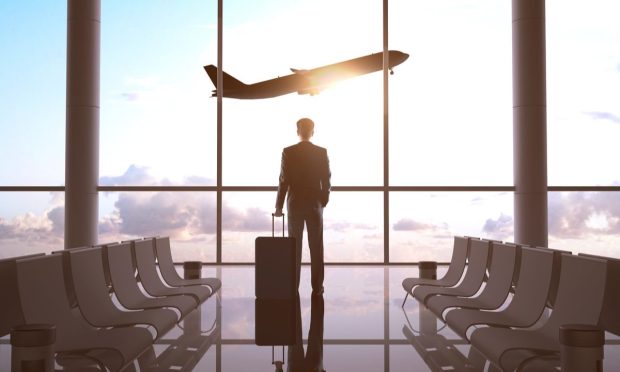Roaring Inflation May Short-Circuit Business Travel Snapback

All manner of earnings reports breathlessly herald the arrival of the great snapback. But one wonders, at least for business travel, how long it will be a case of “wheels up.”
The data at least so far show that companies are starting to open the purse strings for non-essential business travel.
As noted in this space late last month, the Global Business Travel Association (GBTA) published member survey results finding that three-quarters plan to resume domestic travel, and just over half plan to resume international travel in the next three months.
Read more: Business Travel Takeoff Looks Imminent as Conditions Improve — But Who Really Knows?
And at the moment, things look lofty, at least if you listen to earnings calls or read through the transcripts. Boeing CFO Brian West said during the latest conference call that excluding China, “domestic traffic was 84% of the 2019 levels. U.S. carriers are providing the best window into the recovery at this point. Our customers are seeing record booking volumes and very strong forward yields for late spring and summer to the point of being able to offset sharply higher fuel prices, and they’re also highlighting the return of business travel.”
American Airlines has said corporate revenues should hit 90% of 2019’s levels in the second quarter.
And the ripple effects would be positive ones throughout the sector: Hotel firms benefit, of course, and so would conventions, meetings and event planners. The hospitality industry, overall, should see a snapback of its own — as would rental car agencies.
But as to how long it all will last: the Financial Times reported last week that summer will be a strong season for passenger traffic (and this includes business travel), but there will be a winter “freeze” ahead. And that’s evident in the fact that even some of the aforementioned carriers — American among them — are canceling at least some flights that had been slated to take off in the fall. Separately, Deloitte has said that it will take at least two years for business travel to fully recover.
And, in a bit of anecdotal evidence: PYMNTS’ own corporate road warriors have noted that airports are unexpectedly quiet as they board flights around the country.
Short-Lived Renaissance?
And here’s the rub: The uptick in business travel may prove to be short lived amid soaring inflation — where all manner of companies are looking to cut costs. The booking activity that we’re seeing right now is related to trips that have yet to be taken. And it might be the case that the uncertainty that still swirls over mask mandates (and a rising tide of new COVID infections) would prove to be headwinds to corporate travelers actually boarding those flights. Thus, cancellations would snowball.
At least some stakeholders (the service providers themselves) will need to have the technological tools in place to handle the great snapback. Particularly when it comes to booking and paying for it all … or girding for those cancellations (and refunds).
In an interview with Karen Webster, Spreedly CEO Justin Benson and TruTrip Head of Strategy Susnata Banerjee said payments orchestration platforms hold the key to enabling merchant aggregators delivering a seamless checkout experience. An improved payments experience can help deal with a fluid environment — where optimism and bookings give way to cancellations and refunds.
Read also: Traveler Alert: Legacy Systems Struggle to Meet Business Travel Snapback’s Payment Demands
